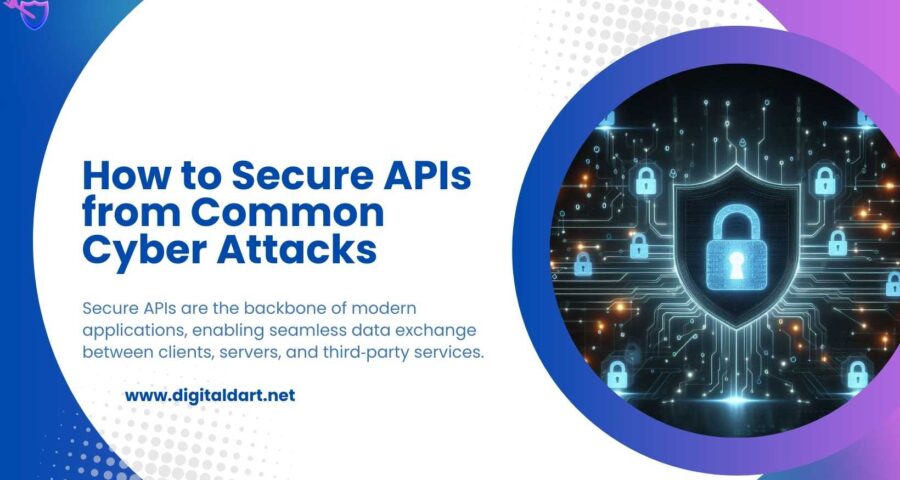Introduction: Why Secure APIs Matter
In today’s interconnected digital landscape, secure APIs are the backbone of modern applications, enabling seamless data exchange between clients, servers, and third‑party services. However, with increased connectivity comes increased risk. Cyber attackers continuously probe poorly protected endpoints to steal sensitive data or disrupt services. Ensuring you secure APIs against common cyber attacks is not just a nice‑to‑have—it’s a critical business requirement that directly impacts your reputation, compliance, and bottom line.
Understanding Common API Security Threats
Before diving into solutions, it’s vital to recognize the attack vectors targeting your APIs. By understanding how malicious actors operate, you can build defenses that truly close gaps.
Injection Attacks
Injection attacks, such as SQL injection or command injection, occur when untrusted input is passed to an interpreter. If your API doesn’t properly validate or sanitize user data, attackers can manipulate queries to exfiltrate or corrupt data.
Broken Authentication and Authorization
APIs often rely on tokens, keys, or session identifiers for authentication. Weak or misconfigured authentication mechanisms allow attackers to impersonate valid users, leading to unauthorized data access and privilege escalation.
Excessive Data Exposure
APIs that return more information than necessary increase your risk surface. Attackers can harvest metadata or system details from verbose API responses to plan further exploits.
Rate Limiting and DDoS
Without rate limiting, APIs become prime targets for denial‑of‑service (DoS) or brute‑force attacks. Flooding an endpoint with excessive requests can degrade performance or bring services offline.
Best Practices to Secure APIs
Implementing a multilayered defense strategy is the most effective way to secure APIs from these threats. Below are industry‑proven best practices you should adopt today.
1. Implement Strong Authentication and Authorization
- OAuth 2.0 / OpenID Connect: Leverage standardized frameworks to manage token issuance, refresh, and scope-based access controls.
- API Keys: Rotate keys regularly and scope them to specific services or environments.
- Role-Based Access Control (RBAC): Define roles and permissions clearly to enforce the principle of least privilege.
2. Use HTTPS Everywhere
Always encrypt API traffic using TLS/SSL. Never expose endpoints over plain HTTP, and enforce HSTS headers to prevent protocol downgrade attacks. This ensures data in transit remains confidential and tamper-proof.
3. Input Validation and Sanitization
- Whitelist Approach: Only allow known‑good inputs based on type, length, and format.
- Parameterized Queries: For database interactions, use prepared statements or ORM frameworks that automatically handle sanitization.
4. Rate Limiting and Throttling
- Per-User Limits: Set daily, hourly, or per-minute caps on requests per API key or user ID.
- Burst Protection: Implement short‑term throttling rules to defend against request spikes common in DoS attacks.
5. Logging, Monitoring, and Auditing
- Structured Logging: Emit logs in JSON or another parseable format to capture request metadata, timestamps, and error codes.
- Real-Time Alerts: Integrate with SIEM tools to trigger alerts on suspicious patterns (e.g., repeated 401 responses, high error rates).
- Audit Trails: Maintain immutable records of critical API calls for forensic investigations and compliance audits.
6. Versioning and Deprecation Strategies
- Semantic Versioning: Adopt v1, v2, etc., in your URL paths or headers so you can push breaking changes without disrupting clients.
- Graceful Deprecation: Provide backward‑compatibility windows and clear sunset notices to avoid orphaned integrations that may lack security updates.
Advanced Techniques to Secure APIs
Once basic protections are in place, consider these advanced measures for a robust API defense posture.
API Gateway and Web Application Firewall (WAF)
- API Gateway: Centralize authentication, rate limiting, and routing rules. Gateways can offload heavy security checks and simplify microservice deployments.
- WAF Deployment: Use a WAF to detect and block common exploits (e.g., XSS, SQLi) before they reach your application servers.
Token Management and OAuth 2.0 Best Practices
- Short-Lived Tokens: Issue access tokens with brief lifespans and use refresh tokens for long‑term sessions.
- Token Introspection: Validate tokens against an authorization server to ensure they haven’t been revoked or tampered with.
Encryption and Secrets Management
- At-Rest Encryption: Protect sensitive data stored in databases or file systems using AES‑256 or stronger algorithms.
- Vault Services: Leverage secret management tools (e.g., HashiCorp Vault, AWS Secrets Manager) to dynamically inject credentials and rotate them without code changes.
Testing and Maintaining Secure APIs
Security is an ongoing process. Regular testing and continuous monitoring help you stay ahead of emerging threats.
Regular Security Audits and Penetration Testing
- Third‑Party Audits: Engage external security firms to perform comprehensive API penetration tests.
- Threat Modeling: Continuously update threat models as your API surface evolves, accounting for new endpoints and use cases.
Automated Security Scanning
- Static Application Security Testing (SAST): Integrate code analyzers into your CI pipeline to catch vulnerabilities early.
- Dynamic Application Security Testing (DAST): Run automated scanners against staging environments to identify runtime flaws.
CI/CD Pipeline Integration
- Shift‑Left Security: Embed security checks—linting, dependency vulnerability scans, container image verification—into every build and deployment.
- Automated Rollbacks: Configure your pipeline to halt or revert deployments if critical security tests fail.
Conclusion: Partner with Digital Dart to Secure Your APIs
Securing your APIs from common cyber attacks is not a one‑time task but an ongoing commitment. By following the best practices and advanced techniques outlined above, you can dramatically reduce your risk exposure and protect the sensitive data flowing through your services. For end‑to‑end security—covering both API protection and network encryption—trust Digital Dart, the leading VPN service provider. With Digital Dart’s robust VPN solutions, you ensure that all your API traffic is encrypted, authenticated, and shielded from prying eyes.
Ready to armor your APIs and network?
Contact Digital Dart today for a free consultation and start securing your digital infrastructure from every angle.


Leave a Reply